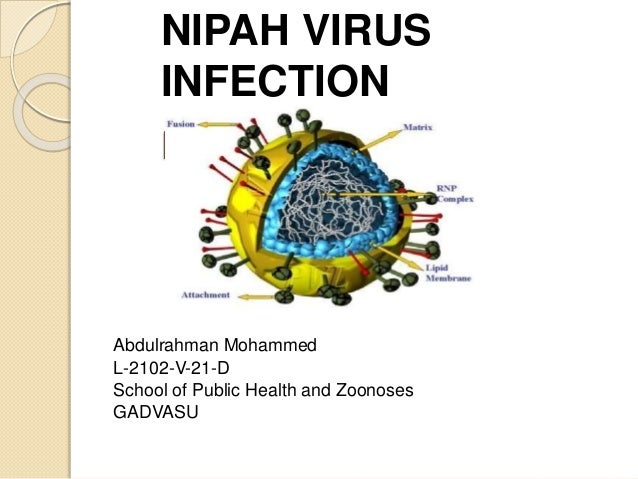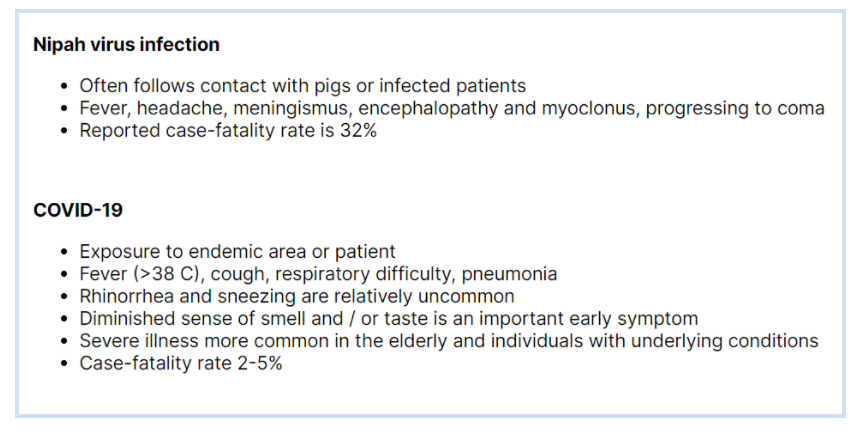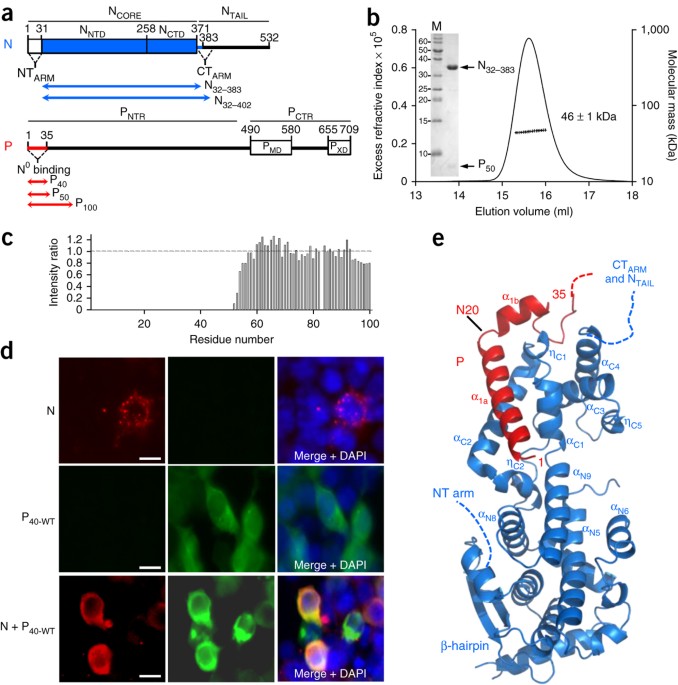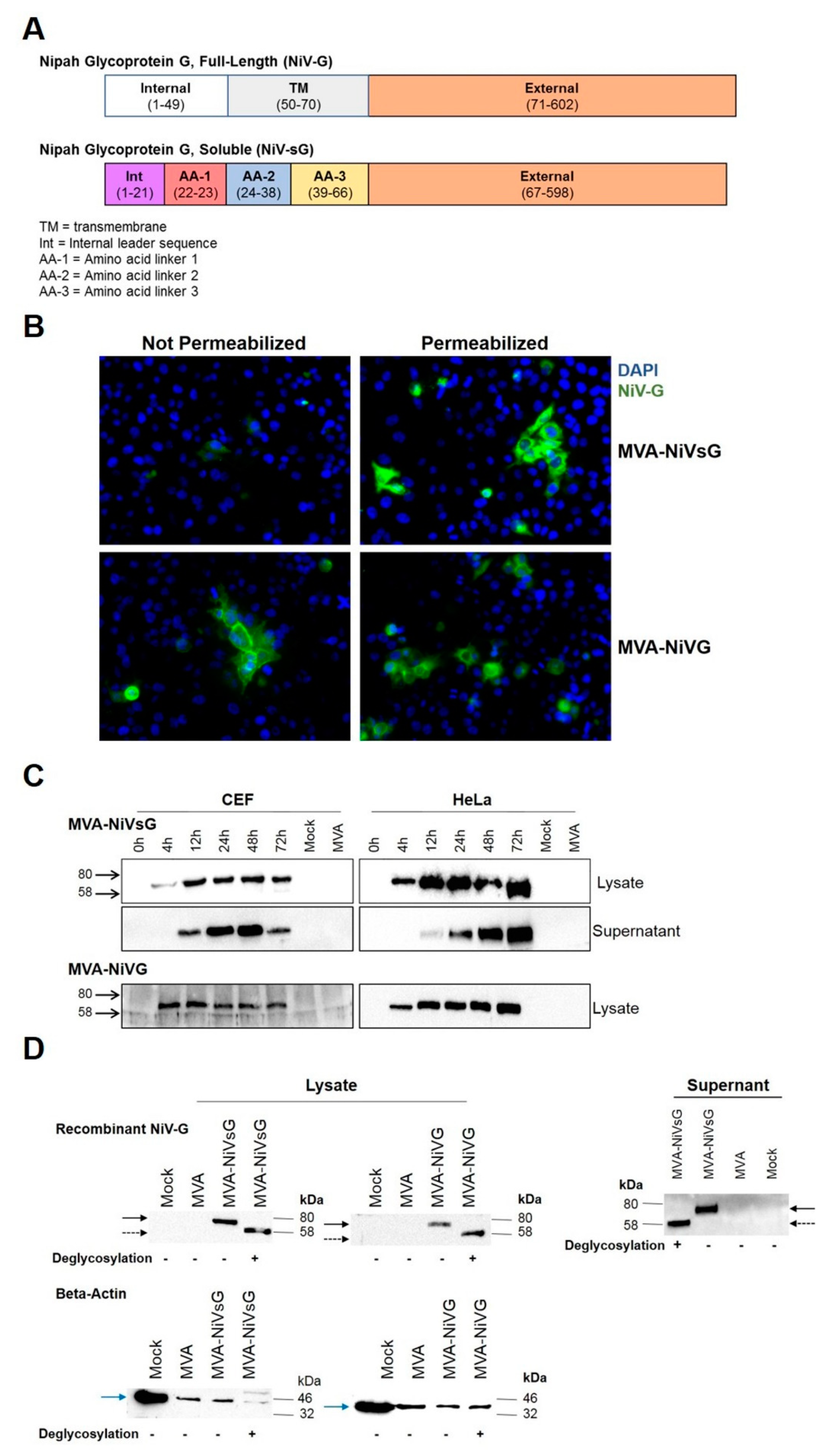Nipah virus biosafety level information
Home » Trending » Nipah virus biosafety level informationYour Nipah virus biosafety level images are ready in this website. Nipah virus biosafety level are a topic that is being searched for and liked by netizens now. You can Find and Download the Nipah virus biosafety level files here. Find and Download all royalty-free images.
If you’re looking for nipah virus biosafety level pictures information linked to the nipah virus biosafety level interest, you have visit the right site. Our website always gives you suggestions for downloading the maximum quality video and picture content, please kindly search and locate more informative video articles and images that match your interests.
Nipah Virus Biosafety Level. One ofNipah virus is a biosafety level 4 agent so all the work that is done with Nipah has to be done in a biosafety level 4 lab. Nipah Nee-pa viral disease is a zoonotic infection caused by Nipah virus NiV a paramyxovirus belonging to the genus Henipavirus of the family Paramyxoviridae. Nipah Virus Rki. Nipah virus scientific name Nipah henipavirus is a bat-borne virus that causes Nipah virus infection in humans and other animals a disease with a high mortality rate.
 Nipah Virus Infection From slideshare.net
Nipah Virus Infection From slideshare.net
Rki Specialised Laboratories The Biosafety Level 4 Laboratory At Rki. Because of its high infectivity in humans and the lack of effective vaccines Nipah virus is classified as a category C agent and handling has to be performed under biosafety level 4 conditions in non-endemic countries which has hindered the development of vaccines. The basic objective of a biosafety program is the containment of potentially harmful biological agents. 119 NiV and Hendra virus HeV are classified as a Biosafety Level-4 BSL-4 pathogens which require the 120 highest containment infrastructure of a reference laboratory2425 Most NiV patients are identified in 121 peripheral settings which typically have modest-to. Such criteria should align. Modes of Transmission Possible direct contact with fluids of animals cause disease.
119 NiV and Hendra virus HeV are classified as a Biosafety Level-4 BSL-4 pathogens which require the 120 highest containment infrastructure of a reference laboratory2425 Most NiV patients are identified in 121 peripheral settings which typically have modest-to.
BSL 4 agent are agents which can be distributed via aerosol transmission and which has no proper treatment or vaccines found so far. Nipah virus NiV a zoonotic paramyxovirus belonging to the genus Henipavirus is classified as a Biosafety Level-4 pathogen based on its high pathogenicity in humans and the lack of available vaccines or therapeutics. This protocol would enable a regional or local laboratory to safely transport or process samples including NiV for serological testing in its biosafety level-2 facility. The Center of Disease Control CDC has declared it a biosafety level 4 agent 6. Assays that can be used at lower biosafety 134 levels are an important priority 135 Clear criteria for down-selection and prioritization of candidate MCMs to move forward into 136 clinical trials versus those that need additional preclinical research. It is associated with high mortality and classified as Biosafety level 4 organisms in view of its features which make it a potential agent for Bioterrorism.
 Source: gideononline.com
Source: gideononline.com
119 NiV and Hendra virus HeV are classified as a Biosafety Level-4 BSL-4 pathogens which require the 120 highest containment infrastructure of a reference laboratory2425 Most NiV patients are identified in 121 peripheral settings which typically have modest-to. And thats a lab where you basicallyyouve seen the movie ETyou have to wear a spacesuit. Biosafety Level 4. It is associated with high mortality and classified as Biosafety level 4 organisms in view of its features which make it a potential agent for Bioterrorism. Nipah Nee-pa viral disease is a zoonotic infection caused by Nipah virus NiV a paramyxovirus belonging to the genus Henipavirus of the family Paramyxoviridae.
 Source: jfmpc.com
Source: jfmpc.com
This the highest biosafety level category home to agents which can be distributed via aerosol transmission and have no treatment or vaccine. As no laboratory has complete control over the specimens it receives standard precautions should always be adopted and practiced. Which are natural reservo. One ofNipah virus is a biosafety level 4 agent so all the work that is done with Nipah has to be done in a biosafety level 4 lab. Animals in biosafety level 4 laboratories.
 Source: nature.com
Source: nature.com
Biosafety Level 4. Since its initial emergence in 1998 in Malaysia this virus has become a great threat to domestic animals and humans. Which are natural reservo. Nipah virus NiV a zoonotic paramyxovirus belonging to the genus Henipavirus is classified as a Biosafety Level-4 pathogen based on its high pathogenicity in humans and the lack of available vaccines or therapeutics. Nipah virus scientific name Nipah henipavirus is a bat-borne virus that causes Nipah virus infection in humans and other animals a disease with a high mortality rate.
 Source: pinterest.com
Source: pinterest.com
Risk GroupBSL Risk group 4 Biosafety level. Since its initial emergence in 1998 in Malaysia this virus has become a great threat to domestic animals and humans. Since its initial emergence in 1998 in Malaysia this virus has become a great threat to domestic animals and humans. The Center of Disease Control CDC has declared it a biosafety level 4 agent 6. Assays that can be used at lower biosafety 134 levels are an important priority 135 Clear criteria for down-selection and prioritization of candidate MCMs to move forward into 136 clinical trials versus those that need additional preclinical research.
 Source: mdpi.com
Source: mdpi.com
133 challenge strains for RD of MCMs for NiV infection. Biosafety level 2 BSL2 is for laboratories that handle emerging viruses requiring containment level 2 such as HIV dengue virus rabies virus that are not generally transmitted by airborne routes. Nipah Nee-pa viral disease is a zoonotic infection caused by Nipah virus NiV a paramyxovirus belonging to the genus Henipavirus of the family Paramyxoviridae. Duane Herring 5 Sept 2021. The basic objective of a biosafety program is the containment of potentially harmful biological agents.
 Source: febs.onlinelibrary.wiley.com
Source: febs.onlinelibrary.wiley.com
Sporadic outbreaks and person-to-person. This the highest biosafety level category home to agents which can be distributed via aerosol transmission and have no treatment or vaccine. As no laboratory has complete control over the specimens it receives standard precautions should always be adopted and practiced. The Center of Disease Control CDC has declared it a biosafety level 4 agent 6. Biosafety level 2 BSL2 is for laboratories that handle emerging viruses requiring containment level 2 such as HIV dengue virus rabies virus that are not generally transmitted by airborne routes.
 Source: researchgate.net
Source: researchgate.net
Which are natural reservo. Nipah Virus Rki. Nipah Virus Infection is an emerging zoonotic infection which presents with acute encephalitis and respiratory distress syndrome. Biosafety level 2 BSL2 is for laboratories that handle emerging viruses requiring containment level 2 such as HIV dengue virus rabies virus that are not generally transmitted by airborne routes. Assays that can be used at lower biosafety 134 levels are an important priority 135 Clear criteria for down-selection and prioritization of candidate MCMs to move forward into 136 clinical trials versus those that need additional preclinical research.
 Source: slideshare.net
Source: slideshare.net
This the highest biosafety level category home to agents which can be distributed via aerosol transmission and have no treatment or vaccine. Nipah Virus Infection is an emerging zoonotic infection which presents with acute encephalitis and respiratory distress syndrome. Close contact with horses pigs and pteropus bats has been recorded in infections. Rki Specialised Laboratories The Biosafety Level 4 Laboratory At Rki. Assays that can be used at lower biosafety 134 levels are an important priority 135 Clear criteria for down-selection and prioritization of candidate MCMs to move forward into 136 clinical trials versus those that need additional preclinical research.
 Source: europepmc.org
Source: europepmc.org
Since its initial emergence in 1998 in Malaysia this virus has become a great threat to domestic animals and humans. Designed for at least Bio-safety Level 2 or above if required. The Center of Disease Control CDC has announced Nipah Virus as a biosafety level 4 agent the highest biosafety level class. One ofNipah virus is a biosafety level 4 agent so all the work that is done with Nipah has to be done in a biosafety level 4 lab. Because of its high infectivity in humans and the lack of effective vaccines Nipah virus is classified as a category C agent and handling has to be performed under biosafety level 4 conditions in non-endemic countries which has hindered the development of vaccines.
 Source: researchgate.net
Source: researchgate.net
Close contact with horses pigs and pteropus bats has been recorded in infections. Nipah virus scientific name Nipah henipavirus is a bat-borne virus that causes Nipah virus infection in humans and other animals a disease with a high mortality rate. Close contact with horses pigs and pteropus bats has been recorded in infections. 119 NiV and Hendra virus HeV are classified as a Biosafety Level-4 BSL-4 pathogens which require the 120 highest containment infrastructure of a reference laboratory2425 Most NiV patients are identified in 121 peripheral settings which typically have modest-to. Since its initial emergence in 1998 in Malaysia this virus has become a great threat to domestic animals and humans.
 Source: veteriankey.com
Source: veteriankey.com
119 NiV and Hendra virus HeV are classified as a Biosafety Level-4 BSL-4 pathogens which require the 120 highest containment infrastructure of a reference laboratory2425 Most NiV patients are identified in 121 peripheral settings which typically have modest-to. Assays that can be used at lower biosafety 134 levels are an important priority 135 Clear criteria for down-selection and prioritization of candidate MCMs to move forward into 136 clinical trials versus those that need additional preclinical research. It is a biosafety level-4 pathogen which is transmitted by specific types of fruit bats mainly Pteropus spp. The basic objective of a biosafety program is the containment of potentially harmful biological agents. Designed for at least Bio-safety Level 2 or above if required.
 Source: researchgate.net
Source: researchgate.net
Duane Herring 5 Sept 2021. The Center of Disease Control CDC has declared it a biosafety level 4 agent 6. Close contact with horses pigs and pteropus bats has been recorded in infections. Nipah virus is also a growing concern for the United States. This protocol would enable a regional or local laboratory to safely transport or process samples including NiV for serological testing in its biosafety level-2 facility.
 Source: slideshare.net
Source: slideshare.net
Such criteria should align. Hendra and Nipah virus have been isolated in tissues of infected animals. The Center of Disease Control CDC has declared it a biosafety level 4 agent 6. Because of its high infectivity in humans and the lack of effective vaccines Nipah virus is classified as a category C agent and handling has to be performed under biosafety level 4 conditions in non-endemic countries which has hindered the development of vaccines. One ofNipah virus is a biosafety level 4 agent so all the work that is done with Nipah has to be done in a biosafety level 4 lab.
 Source: europepmc.org
Source: europepmc.org
Nipah virus NiV a zoonotic paramyxovirus belonging to the genus Henipavirus is classified as a Biosafety Level-4 pathogen based on its high pathogenicity in humans and the lack of available vaccines or therapeutics. BSL 4 agent are agents which can be distributed via aerosol transmission and which has no proper treatment or vaccines found so far. The Center of Disease Control CDC has declared it a biosafety level 4 agent 6. Nipah virus NiV a zoonotic paramyxovirus belonging to the genus Henipavirus is classified as a Biosafety Level-4 pathogen based on its high pathogenicity in humans and the lack of available vaccines or therapeutics. And theres only a.
 Source: slidetodoc.com
Source: slidetodoc.com
Nipah virus NiV a zoonotic paramyxovirus belonging to the genus Henipavirus is classified as a Biosafety Level-4 pathogen based on its high pathogenicity in humans and the lack of available vaccines or therapeutics. The basic objective of a biosafety program is the containment of potentially harmful biological agents. Nipah virus NiV a zoonotic paramyxovirus belonging to the genus Henipavirus is classified as a Biosafety Level-4 pathogen based on its high pathogenicity in humans and the lack of available vaccines or therapeutics. Nipah virus NiV is an emerging zoonotic paramyxovirus that causes severe encephalitis and respiratory disease with a high mortality rate in humans. Duane Herring 5 Sept 2021.
 Source: researchgate.net
Source: researchgate.net
Nipah Virus Rki. Since its initial emergence in 1998 in Malaysia this virus has become a great threat to domestic animals and humans. 119 NiV and Hendra virus HeV are classified as a Biosafety Level-4 BSL-4 pathogens which require the 120 highest containment infrastructure of a reference laboratory2425 Most NiV patients are identified in 121 peripheral settings which typically have modest-to. Hendra and Nipah virus have been isolated in tissues of infected animals. Rki Specialised Laboratories The Biosafety Level 4 Laboratory At Rki.
 Source: sciencedirect.com
Source: sciencedirect.com
Nipah virus NiV is an emerging zoonotic paramyxovirus that causes severe encephalitis and respiratory disease with a high mortality rate in humans. Rki Specialised Laboratories The Biosafety Level 4 Laboratory At Rki. Nipah virus scientific name Nipah henipavirus is a bat-borne virus that causes Nipah virus infection in humans and other animals a disease with a high mortality rate. Sporadic outbreaks and person-to-person. It is associated with high mortality and classified as Biosafety level 4 organisms in view of its features which make it a potential agent for Bioterrorism.
 Source: europepmc.org
Source: europepmc.org
As no laboratory has complete control over the specimens it receives standard precautions should always be adopted and practiced. Because of its high infectivity in humans and the lack of effective vaccines Nipah virus is classified as a category C agent and handling has to be performed under biosafety level 4 conditions in non-endemic countries which has hindered the development of vaccines. Risk GroupBSL Risk group 4 Biosafety level. It is a biosafety level-4 pathogen which is transmitted by specific types of fruit bats mainly Pteropus spp. BSL 4 agent are agents which can be distributed via aerosol transmission and which has no proper treatment or vaccines found so far.
This site is an open community for users to do submittion their favorite wallpapers on the internet, all images or pictures in this website are for personal wallpaper use only, it is stricly prohibited to use this wallpaper for commercial purposes, if you are the author and find this image is shared without your permission, please kindly raise a DMCA report to Us.
If you find this site convienient, please support us by sharing this posts to your preference social media accounts like Facebook, Instagram and so on or you can also bookmark this blog page with the title nipah virus biosafety level by using Ctrl + D for devices a laptop with a Windows operating system or Command + D for laptops with an Apple operating system. If you use a smartphone, you can also use the drawer menu of the browser you are using. Whether it’s a Windows, Mac, iOS or Android operating system, you will still be able to bookmark this website.
Category
Related By Category
- Impeachment american crime story episodes information
- El salvador olympics 2020 information
- Britney spears baby daddy information
- Tiger king zookeeper dead info
- American crime story movie information
- Mac miller memento mori information
- Blues clues blue gender info
- American crime story ken starr info
- Travis scott utopia album information
- Steve and joe from blues clues now info